 |
Wenxu Shang et al published their article in Cell Reports Physical Science
A zinc-air battery capable of working in anaerobic conditions and fast environmental energy harvesting
Using copper oxide as the air electrode material, this work creatively solves the shortcoming that the operation of conventional Zn-air batteries must depend on oxygen, and develops a new Zn-air battery that can freely switch between air and oxygen-free conditions, exhibiting a voltage of 1.28 V when operating in zinc-air mode and 1.13 V as well as 0.79 V when operating in Zn-Cu mode. In addition, the cathode material also exhibits ultra-fast self-charging performance (~120 s) when the battery is switched from oxygen-free to air environment.
June 2022
|
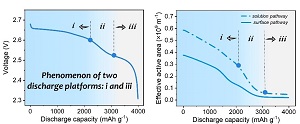 |
|
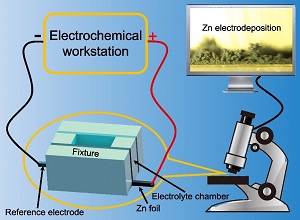 |
Yifan Cui et al published their article in Electrochimica Acta
In-situ observation of the Zn electrodeposition on the planar electrode in the alkaline electrolytes with different viscosities
This work simulates the gelation process of alkaline electrolyte by changing the viscosity, and observes the deposition process of zincate ions by in-situ observation. Combined with the data analysis of deposition thickness, the effect of current and viscosity on the deposition process is explored. The conclusions of this work will guide the selection of electrolytes for future zinc-based batteries, and the in-situ observation technology will provide new ideas and methods for the mechanism research of battery interfaces.
April 2022
|
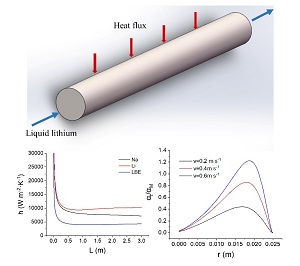 |
Yongfu Liu et al published their article in Journal of University of Science and Technology of China
Numerical investigation on heat transfer characterization of liquid lithium metal in pipe
In this work, the turbulence flow of liquid lithium metal in straight pipe is studied by numerical simulation, and the effects of inlet flow rate, temperature and wall heat flux density on its heat transfer performance of liquid lithium metal were systematically studied. This work reveals the flow and heat transfer characteristics of high-temperature liquid lithium metal in a straight tube, helping to promote the use of liquid lithium metal in lithium-cooled nuclear reactors.
March 2022 |
 |
|
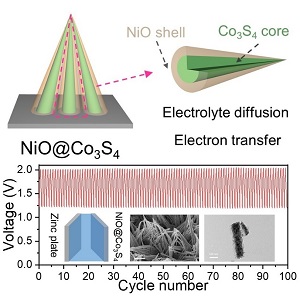 |
|
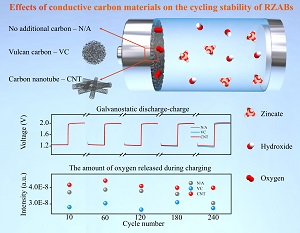 |
Zhongxi Zhao et al published their article in International Journal of Energy Research
Revealing the effects of conductive carbon materials on the cycling stability of rechargeable Zn-air batteries
In this work, the effects of conductive carbon materials on the cycling stability and charging performance of rechargeable zinc-air batteries (RZABs) are comprehensively investigated. Unlike previous work, electrode characterization was performed only at different stages of battery cycling or after failure. Differential electrochemical mass spectrometry (DEMS) was introduced to directly monitor the gases released during the different cycles. This work not only demonstrates that conductive carbon materials have a significant impact on cycling stability, but also indicates the need for in situ gas analysis to more rigorously assess charging performance.
January 2022 |
 |
Wentao Yu et al published their article in Chemical Engineering Journal
Unraveling the mechanism of non-uniform zinc deposition in rechargeable zinc-based batteries with vertical orientation
In this work, the inhomogeneous deposition behavior of zinc in the vertical direction was investigated by a combination of experimental and numerical simulations. Firstly, the inhomogeneous deposition of zinc was studied by means of optical observation, and on this basis, the mechanism leading to the formation of inhomogeneous deposition was revealed by means of numerical simulation. This work can provide a reference for the design of zinc electrodes in the future.
December 2021 |
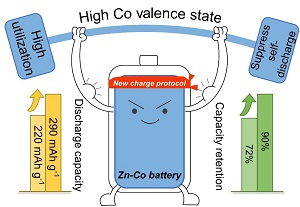 |
Wenxu Shang et al published their article in Applied Energy
Optimizing the charging protocol to address the self-discharge issues in rechargeable alkaline Zn-Co batteries
This work systematically investigates the self-discharge phenomenon of Zn-Co batteries and further analyzes the mechanism of the charging and discharging process. In order to solve the self-discharge problem, this work proposes a new charging protocol with galvanostatic charging and then potentiostatic charging, which effectively improves the retention of battery capacity after delay and enhances the practical discharge capacity as well as the cycling stability.
December 2021 |
 |
Wentao Yu et al published their article in Journal of Energy Storage
Rechargeable aqueous Zn-LiMn2O4 hybrid batteries with high performance and safety for energy storage
This work provides a systematic summary of the novel Zn-LiMn2O4 batteries, mainly including the introduction of the working principle of the battery, the optimization of LiMn2O4 materials and the design of electrodes, the construction of stable zinc electrodes, and the development of electrolytes. This article can serve as a reference for the further development and application of Zn-LiMn2O4 batteries.
December 2021 |
 |
Wenxu Shang et al published their article in Journal of University of Science and Technology of China
Development of the Ag nanoparticle-decorated Co3O4 electrode for high-performance hybrid Zn batteries
In this work, a novel Co3O4 electrode with Ag nanoparticle modification was constructed, and the electrical conductivity was improved and the morphology was effectively optimized due to the synergistic effect between Ag nanoparticles and Co3O4 nanowires. A new positive electrode material with high active material utilization and high oxygen electrocatalytic activity was obtained.
November 2021 |
|
